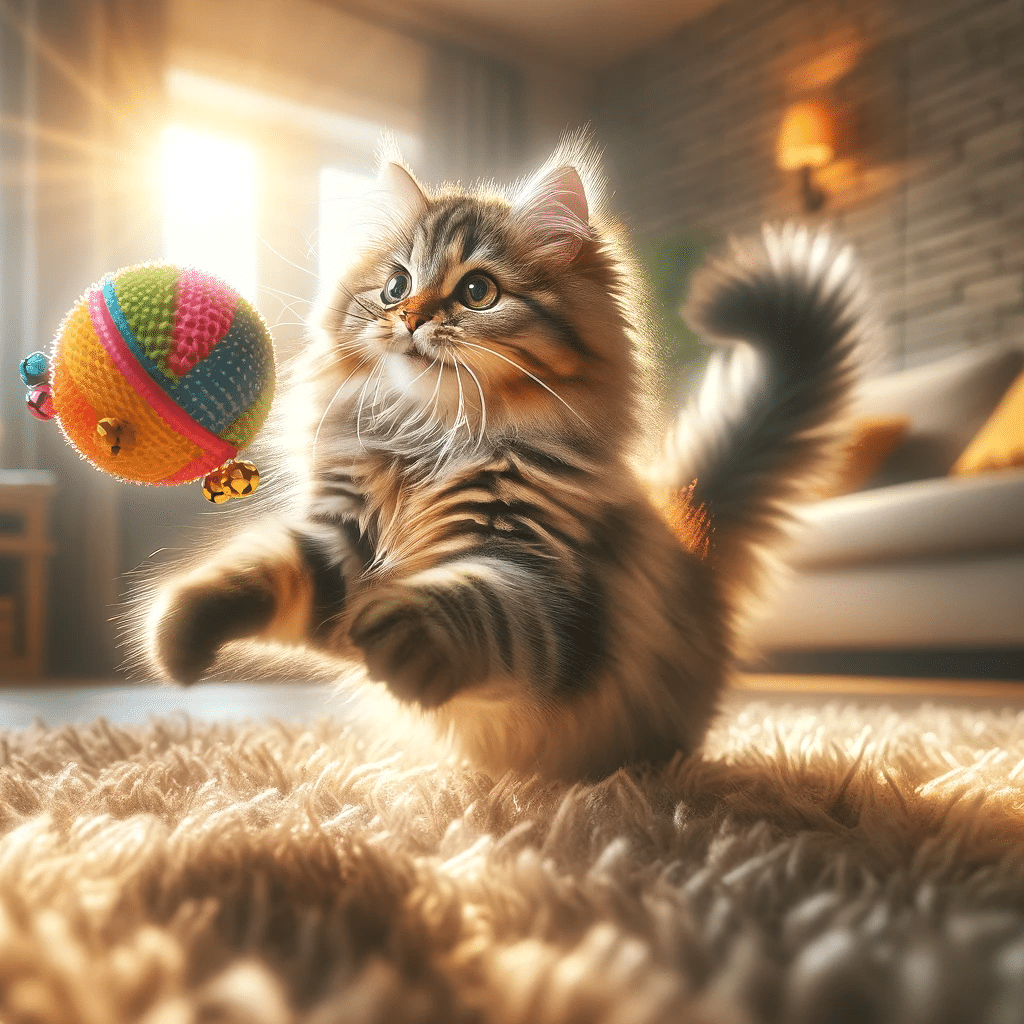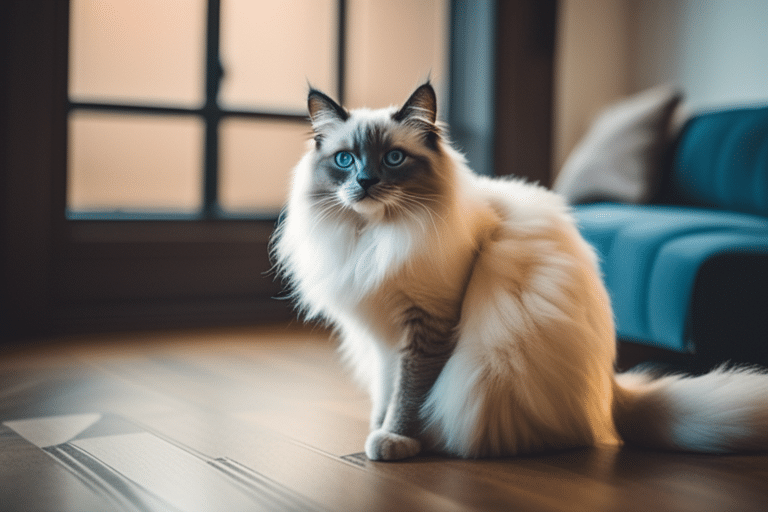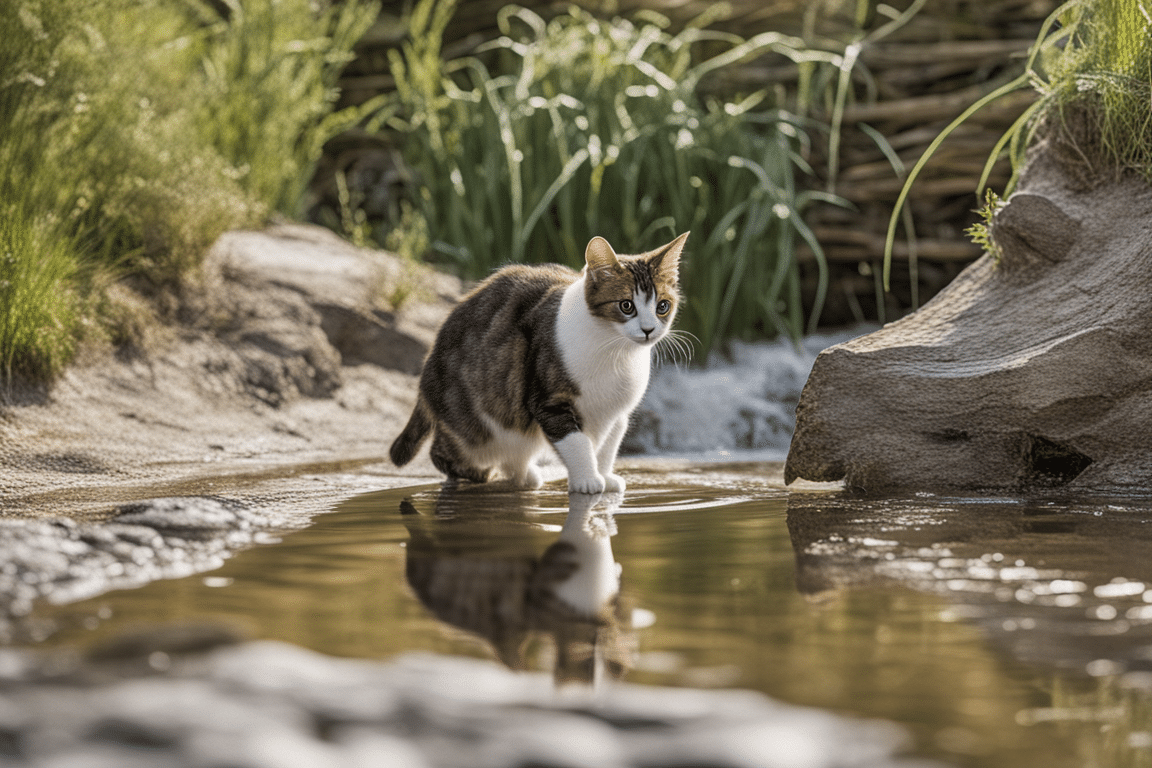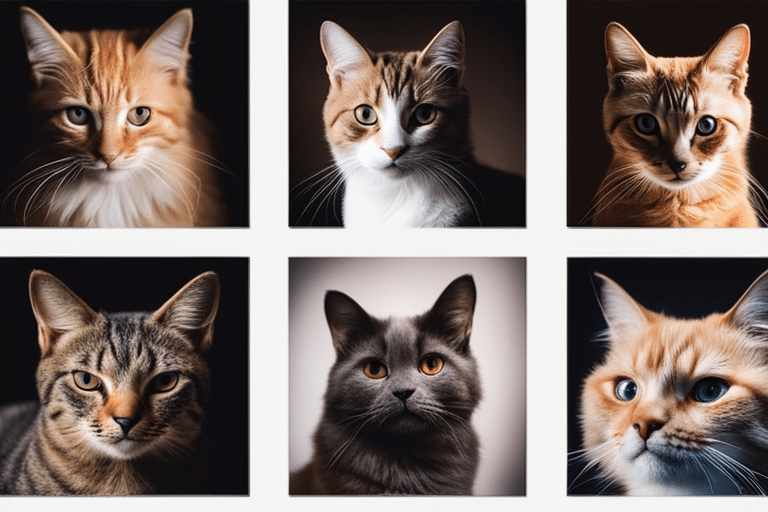
Curious about how old your cat is in human years? It’s a common question among pet owners, and the answer may surprise you. While the traditional belief was that one cat year is equivalent to seven human years, the reality is a bit more complex. In fact, there is a science behind calculating your feline friend’s age in human years.
In this article, we will dive deep into the mysterious world of cat years and help you decode the age of your beloved pet. We will explore the factors that influence aging in cats and the various methods used to measure their age in human years. You’ll discover that the seven-year rule is not entirely accurate and that different life stages and breeds play a significant role in determining your cat’s true age.
Understanding your cat’s age in human years is not only a fun factoid but can also help you provide the best care tailored to their specific needs. So, join us on this exciting journey as we demystify the mystery of cat years and unravel the secrets of your feline friend’s age.
Understanding the concept of cat years
Cats age differently than humans, and understanding the concept of cat years is essential to decoding their age accurately. While it is true that cats age faster than humans, the one-year-to-seven-years conversion is not entirely accurate. This traditional method oversimplifies the aging process and fails to take into account the various factors that influence a cat’s lifespan.
Cats experience rapid growth and development in their early years, similar to humans. However, their aging process slows down as they reach adulthood. It is crucial to consider the different life stages of a cat and the impact of breed variations on their aging process. By understanding these factors, you can gain a better understanding of your cat’s age in human years.
The traditional method of calculating cat years may have been a simple rule of thumb, but it does not provide an accurate representation of a cat’s age. Let’s explore a more scientific approach to calculating your cat’s age in human years.For a deeper dive into this topic, the article from IAMS offers comprehensive insights.
Why it’s important to calculate your cat’s age in human years
Now that we understand the factors that influence a cat’s aging process, let’s delve into the practical aspect of calculating your cat’s age in human years.
To calculate your cat’s age accurately, you’ll need to know their current age in cat years and the new method of calculating cat years. If your cat is a kitten, you’ll need to estimate their age based on developmental milestones and physical characteristics. Once you have an estimate, you can use the new method to calculate their age in human years.
For example, if your cat is two years old, you would assign 15 human years for the first year and 9 human years for the second year. Adding these together gives you a total of 24 human years. From there, you can calculate their age in human years for each additional cat year using the conversion rate of 4 human years per cat year.
By following this method, you can determine your cat’s age in human years and gain a better understanding of their development and overall health. Resources like Purina provide valuable tools like a cat years calculator to make this task easier.

The traditional method of calculating cat years
The traditional method of calculating cat years is based on the idea that one cat year is equivalent to seven human years. This rule of thumb has been around for many years and is often used as a quick way to estimate a cat’s age. However, it is not entirely accurate and fails to take into account the various factors that influence a cat’s aging process.
One of the main reasons why the seven-year rule is flawed is that cats do not age at a consistent rate throughout their lives. For example, a one-year-old cat is much more mature than a seven-year-old human. Additionally, different breeds of cats age at different rates, with some breeds living longer than others. So, while the traditional method can give you a rough estimate of your cat’s age, it is not an accurate representation of their true age.
The new method of calculating cat years
In recent years, scientists have developed a new method of calculating cat years that takes into account the different stages of a cat’s life. This method is based on the idea that cats mature much more quickly in their early years and then age more slowly as they get older. By considering these life stages, researchers have been able to create a more accurate formula for calculating a cat’s age in human years.
The new method takes into account the fact that a one-year-old cat is equivalent to about 15 human years, a two-year-old cat is equivalent to about 24 human years, and a three-year-old cat is equivalent to about 28 human years. From there, the aging process slows down, with each additional cat year equivalent to about four human years. This new method provides a more realistic picture of a cat’s age and allows pet owners to better understand their feline friend’s development.
Factors that affect a cat’s aging process
While the new method of calculating cat years is more accurate than the traditional method, it’s important to remember that every cat is unique and will age differently. Several factors can influence a cat’s aging process, including genetics, diet, lifestyle, and overall health.
Genetics play a significant role in determining how quickly a cat ages. Some breeds are more prone to certain age-related diseases and may have a shorter lifespan than others. Additionally, the quality of a cat’s diet can impact their overall health and longevity. A balanced diet that meets all of their nutritional needs is essential for keeping your cat healthy and helping them age gracefully.
Along with genetics and diet, a cat’s lifestyle can also affect their aging process. Cats that live indoors tend to have longer lifespans than cats that are allowed to roam outdoors. Indoor cats are protected from the dangers of traffic, predators, and infectious diseases, which can all shorten a cat’s lifespan. Providing your cat with a safe and stimulating environment can help promote their overall health and well-being.
Finally, regular veterinary care is crucial for monitoring your cat’s health and catching any potential issues early on. Routine check-ups, vaccinations, and preventative care can all help ensure that your cat lives a long and healthy life. Each stage requires different care strategies, which are well explained in resources like Natusan.

Common myths about cat years debunked
There are several common myths about cat years that can lead to misconceptions about a cat’s age. One of the most prevalent myths is that cats age seven years for every human year. As we discussed earlier, this rule of thumb is not accurate and fails to consider the different stages of a cat’s life.
Another myth is that cats age at a consistent rate throughout their lives. In reality, cats age more rapidly in their early years and then slow down as they reach adulthood. This is why the new method of calculating cat years takes into account the different life stages of a cat.
It’s also important to debunk the myth that all cats have nine lives. While cats are known for their agility and ability to survive dangerous situations, they only have one life, just like any other living creature. Taking proper care of your cat and providing them with a safe and loving environment is the best way to ensure they live a long and happy life. The Companion Veterinary Hospital provides evidence-based information to clear up these myths.
How to calculate your cat’s age in human years
Now that we have debunked some common myths about cat years, let’s explore how to calculate your cat’s age in human years using the new method. To calculate your cat’s age, start by determining their current life stage. If your cat is less than one year old, they are considered a kitten. If they are between one and six years old, they are considered an adult, and if they are seven years or older, they are considered senior.
Once you have determined your cat’s life stage, use the following formula to calculate their age in human years:
– Kitten: Age in human years = Cat’s age in cat years x 15
– Adult: Age in human years = ((Cat’s age in cat years – 1) x 4) + 24
– Senior: Age in human years = ((Cat’s age in cat years – 7) x 5) + 48
By using this formula, you can get a more accurate estimate of your cat’s age in human years. However, it’s important to remember that this is just an estimate and that individual cats may age differently based on their genetics and overall health. This method is detailed by the Old Farmer’s Almanac.
Understanding the life stages of a cat
Now that you know how to calculate your cat’s age in human years, let’s take a closer look at the different life stages of a cat. Understanding these stages can help you provide the best care for your feline friend at each phase of their life.
The first life stage is kittenhood, which typically lasts from birth to one year old. During this time, kittens are full of energy and curiosity as they explore the world around them. They also undergo rapid growth and development, both physically and mentally. Providing your kitten with proper nutrition, socialization, and plenty of playtime is essential for their healthy development.
The next life stage is adulthood, which begins around one year of age and lasts until around six years old. Adult cats are generally more settled and have established their personalities and preferences. They still require regular exercise, mental stimulation, and a balanced diet to maintain their health. This is also the time when cats may start to show signs of age-related conditions, such as dental disease or arthritis.
The final life stage is seniorhood, which starts around seven years old and continues into the cat’s golden years. Senior cats may experience a decline in energy levels, changes in appetite, and an increased risk of age-related diseases. Providing your senior cat with a comfortable and low-stress environment, regular veterinary check-ups, and a specialized diet can help support their health during this stage of life.
Tips for caring for a cat at different life stages
Now that you understand the different life stages of a cat, let’s explore some tips for caring for your feline friend at each stage of their life.
For kittens, it’s important to provide them with a safe and stimulating environment. This includes kitten-proofing your home, providing appropriate toys for play, and socializing them with other cats and humans. Feeding your kitten a balanced diet designed for growth and development is also crucial.
For adult cats, regular exercise is essential for maintaining a healthy weight and preventing obesity-related diseases. Interactive toys, scratching posts, and puzzle feeders can help keep your adult cat mentally and physically stimulated. Regular grooming and dental care are also important for maintaining their overall health.
For senior cats, it’s important to monitor their health closely and address any changes or concerns promptly. Regular veterinary check-ups, including bloodwork and dental exams, can help catch any age-related diseases early on. Providing a comfortable and quiet space for your senior cat to relax, along with a diet designed for their specific needs, can also help support their overall well-being.

Conclusion: Embracing your cat’s unique aging process
In conclusion, understanding your cat’s age in human years is not only a fun factoid, but it can also help you provide the best care tailored to their specific needs. While the traditional belief that one cat year is equivalent to seven human years has been debunked, the new method of calculating cat years provides a more accurate representation of a cat’s age. By considering the different life stages and factors that influence a cat’s aging process, you can better understand and embrace your feline friend’s unique aging journey.
Remember, every cat is unique, and individual cats may age differently based on their genetics, diet, lifestyle, and overall health. By providing your cat with proper nutrition, regular veterinary care, mental stimulation, and a safe environment, you can help ensure that they live a long and happy life. So, embrace the mystery of cat years and cherish every moment with your furry companion.
For readers seeking further enrichment, BarkleyAndPaws offers a trio of articles that expand on cat care and aging:
- Discover the nuances of feline nutrition to support your cat’s health at every age.
- Understand the importance of regular veterinary checkups for early detection and management of age-related conditions.
- Dive into the behavioral changes in aging cats to maintain a strong bond and ensure their comfort.
FAQ
How do I use a cat years calculator?
Input your cat’s actual age into a cat years calculator, like those mentioned in our resources, to obtain their age in human years.
What are the main factors affecting a cat’s lifespan?
Key influencers include genetics, diet, environment, and access to veterinary care.
How can I ensure my senior cat stays healthy?
Emphasize regular veterinary check-ups, a diet tailored to senior needs, and a comfortable living environment.
Understanding and accurately calculating your cat’s age in human years is pivotal in providing care that aligns with each life stage. With the aid of precise calculators and a deep understanding of aging factors, your cat can enjoy a fulfilling, joyful life. For comprehensive guidance on calculating your cat’s human years and tips for their care, Pumpkin Care remains an invaluable resource.





